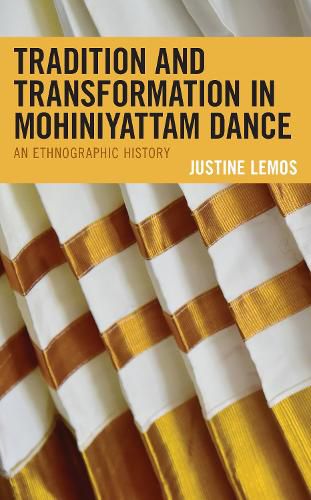Readings Newsletter
Become a Readings Member to make your shopping experience even easier.
Sign in or sign up for free!
You’re not far away from qualifying for FREE standard shipping within Australia
You’ve qualified for FREE standard shipping within Australia
The cart is loading…






The movement of Mohiniyattam dance is a rich semeiotic system that is inclusive of controversy, embodied gender ideals, and cultural information. The historical and cultural conditions that enabled the emergence of Mohiniyattam as the epitome of lasya ( feminine ) unfolded out of a specific historical and cultural moment. Tradition and Transformation in Mohiniyattam Dance: An Ethnographic History demonstrates how Mohiniyattam, a form previously stigmatized, was reinvented as a Sign of traditional Keralite Womanhood. The book traces how the emergence of Mohiniyattam as a traditional form of dance based on a feminine aesthetic was synchronistic with the outlawing of polyandrous marriage practices and devadasi practices as well as changes in matrilineal inheritance the outlawing of and reforms in women’s dress customs in Kerala, India. These layers of history and cultural meaning permitted Mohiniyattam’s renaissance as a Sign of female grace and tradition. Throughout, the author argues that practicing and learning movement is a gateway to understanding a system of semiosis. Danced movement itself can be a locust, a bell-weather, and even an agent of social change.
$9.00 standard shipping within Australia
FREE standard shipping within Australia for orders over $100.00
Express & International shipping calculated at checkout
The movement of Mohiniyattam dance is a rich semeiotic system that is inclusive of controversy, embodied gender ideals, and cultural information. The historical and cultural conditions that enabled the emergence of Mohiniyattam as the epitome of lasya ( feminine ) unfolded out of a specific historical and cultural moment. Tradition and Transformation in Mohiniyattam Dance: An Ethnographic History demonstrates how Mohiniyattam, a form previously stigmatized, was reinvented as a Sign of traditional Keralite Womanhood. The book traces how the emergence of Mohiniyattam as a traditional form of dance based on a feminine aesthetic was synchronistic with the outlawing of polyandrous marriage practices and devadasi practices as well as changes in matrilineal inheritance the outlawing of and reforms in women’s dress customs in Kerala, India. These layers of history and cultural meaning permitted Mohiniyattam’s renaissance as a Sign of female grace and tradition. Throughout, the author argues that practicing and learning movement is a gateway to understanding a system of semiosis. Danced movement itself can be a locust, a bell-weather, and even an agent of social change.